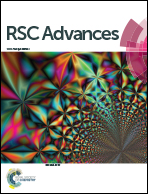Investigation on thermal conductivity of bilayer graphene nanoribbons
Abstract
We investigated the thermal conductivity of bilayer graphene nanoribbons (BGNs) using nonequilibrium molecular dynamics method (NEMD). The relationships among thermal conductivity, different ways of stacking, size, interfacial temperature and edge shape were studied. Two different stacking ways for BGNs are AA-stacked type and AB-stacked type. The results show that the thermal conductivities of AA-stacked BGNs are slightly higher than those of AB-stacked BGNs under the same simulation conditions because of different crystal structures. The thermal conductivity of zigzag BGNs (ZBGNs) first increases and then decreases with increasing width. However, the thermal conductivity of armchair BGNs (ABGNs) monotonously increases with increasing width. The thermal conductivity of BGNs increases with the length of the simulation system. In addition BGNs show temperature dependence and edge-shape dependence for thermal conductivity. We have explained the simulation results by the inter-layer phonon coupling and the phonon scattering, which have been shown to significantly affect the thermal conductivity of BGNs. The systematic analysis of thermal conductivity of BGNs did not only help to obtain conclusions regarding the achievable thermal performance, but also provided the possibility to design different dimensional BGNs for different BGNs-based thermal and microelectronic components.


 Please wait while we load your content...
Please wait while we load your content...